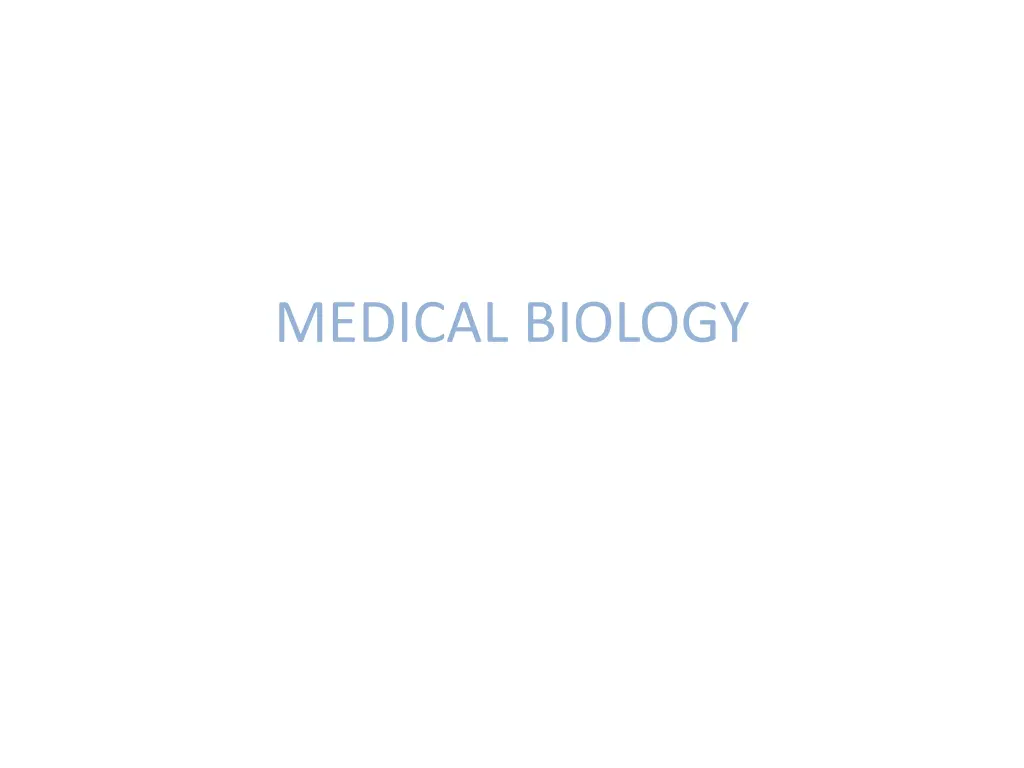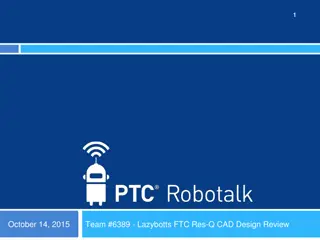
Understanding DNA Replication Process in Medical Biology
Explore the intricate process of DNA replication, essential for cell division and genetic inheritance. Learn about the structure of DNA, the role of chromatin, and the functions of key enzymes involved in DNA replication. Discover how DNA is replicated step by step to ensure accurate transmission of genetic information.
Download Presentation

Please find below an Image/Link to download the presentation.
The content on the website is provided AS IS for your information and personal use only. It may not be sold, licensed, or shared on other websites without obtaining consent from the author. If you encounter any issues during the download, it is possible that the publisher has removed the file from their server.
You are allowed to download the files provided on this website for personal or commercial use, subject to the condition that they are used lawfully. All files are the property of their respective owners.
The content on the website is provided AS IS for your information and personal use only. It may not be sold, licensed, or shared on other websites without obtaining consent from the author.
E N D
Presentation Transcript
DNA is the genetic material it is also called nucleic acid. It defines every cell (identity of the cell). DNA is found within the nucleus. Double-stranded DNA consists of two spiral nucleic acid chains that are twisted into a double helix shape. *WHY?? This twisting allows DNA to be more compact, in order to fit within the nucleus, DNA is packed into tightly coiled structures called chromatin.
Chromatin condenses to form chromosomes during cell division. Prior to DNA replication. DNA must be replicated in order to ensure that each new cell receives the correct number of chromosomes. The process of DNA duplication is called DNA replication.
DNA Structure: DNA is a polymer of nucleotides: It consists of a 5-carbon deoxyribose sugar, a phosphate, and a nitrogenous base. (Also called deoxyribonucleoside triphosphates). The bases are: Purines: adenine (A), guanine (G) Pyrimidines: cytosine (C), thymine (T) Adenine binds with Thymine (A&T). Cytosine binds with Guanine (C&G).
DNA replication: TheDNA replication involve multiple proteins called replication enzymes and RNA. There are three main steps in DNA replication: 1. Initiation : Before DNA can be replicated, the double stranded molecule must be separated into two single strands. This can be done by enzyme called helicase. This enzyme breaks the hydrogen bonding between base pairs to separate the strands into a Y shape known as the replication fork.
2. Elongation: When DNA strands have been separated, a short piece of RNA called a primer binds to the 3' end of the strand. The primer always binds as the starting point for replication. Primers are generated by the enzyme DNA primase. When the primer binds, they will add the complementary nucleotides(A&T, C&G) and strands are formed 3. Termination: it is the final stage in DNA replication, in which an enzyme called exonuclease removes all RNA primers from the original strands. Then another type of exonuclease check the newly formed DNA to remove and replace any errors. Finally, an enzyme called DNA ligase joins the new fragments together forming a single strand.
DNA replication enzymes Function Helicase *Separate the double DNA strands DNA primase *Form the RNA primers exonuclease *Removes all RNA primers from the original strands DNA ligase *Joins the new fragments together forming a single strand.
Polymerization of nucleotides: A phosphodiester bond is formed between the 3' hydroxyl group of one nucleotide and the 5' phosphate group of another. A polynucleotide chain has a sense of direction, one end terminating in a 5 phosphate group (the 5' end) and the other end terminating in a 3' hydroxyl group (the 3' end).
DNA replication https://www.youtube.com/watch?v=TNKWgcFPHqw
Which bases are purines? Guanine and Adenine Which bases are pyrimidines? Thymine, Cytosine, (Uracil) which base is found in RNA but not found in DNA ? Uracil instead of Thymine
What are Genes? Genes : are subunits of DNA, the information database of a cell that is found inside the cell nucleus. This DNA carries the genetic information that is used to make all the proteins the cell needs. Every gene contains a particular set of instructions that code for a specific protein. Gene expression: When genes are expressed, the genetic information on DNA is first copied to a molecule of mRNA (transcription). The mRNA molecules then leave the cell nucleus and enter the cytoplasm, where they participate in protein synthesis by specifying the particular amino acids that make up individual proteins (translation).
Gene expression: http://www.b4fa.org/wp content/uploads/2012/07/Gene-expression1.png
Transcription It is the first step of gene expression, in which a particular segment of DNA is copied into RNA (mRNA). https://www.youtube.com/watch?v=5MfSYnItYvg
RNA splicing: RNA is consist of exons (coding region) and introns (noncoding region). RNA splicing removes the introns from pre mRNA to produce the final set of instructions for the protein. https://www.youtube.com/watch?v=aVgwr0QpYNE
Ribosome: Characteristics of ribosomes: - The ribosome word is derived - 'ribo' from ribonucleic acid and 'somes' from the Greek word 'soma' which means 'body . Ribosomes are small particles, present in large numbers in all the living cells. Typically ribosomes are composed of two subunits: a large subunit and a small subunit. The subunits of the ribosome are synthesized by the nucleolus. The subunits of ribosomes join together when the ribosomes attaches to the messenger RNA during the process of protein synthesis. Ribosomes along with a transfer RNA molecule (tRNA), helps to translate the protein-coding genes in mRNA to proteins. The bound and the free ribosomes are similar in structure and are involved in protein synthesis.
Ribosomes Function - They assemble amino acids to form specific proteins, proteins are essential to carry out cellular activities.
Protein Folding and sorting: Molecular Chaperones : In molecular biology, molecular chaperones are proteins that assist the covalent folding or unfolding and the assembly or disassembly of other macromolecular structures. Functions of molecular chaperones: 1- Chaperone binding stabilizes the amino-terminal portion in an unfolded conformation until the rest of the polypeptide chain is synthesized and the completed protein can fold correctly. 2- Chaperones also stabilize unfolded polypeptide chains during their transport into subcellular organelles. For example, during the transfer of proteins into mitochondria from the cytosol. 3- Chaperones are involved in the assembly of proteins that consist of multiple polypeptide chains and in the assembly of macromolecular structures

